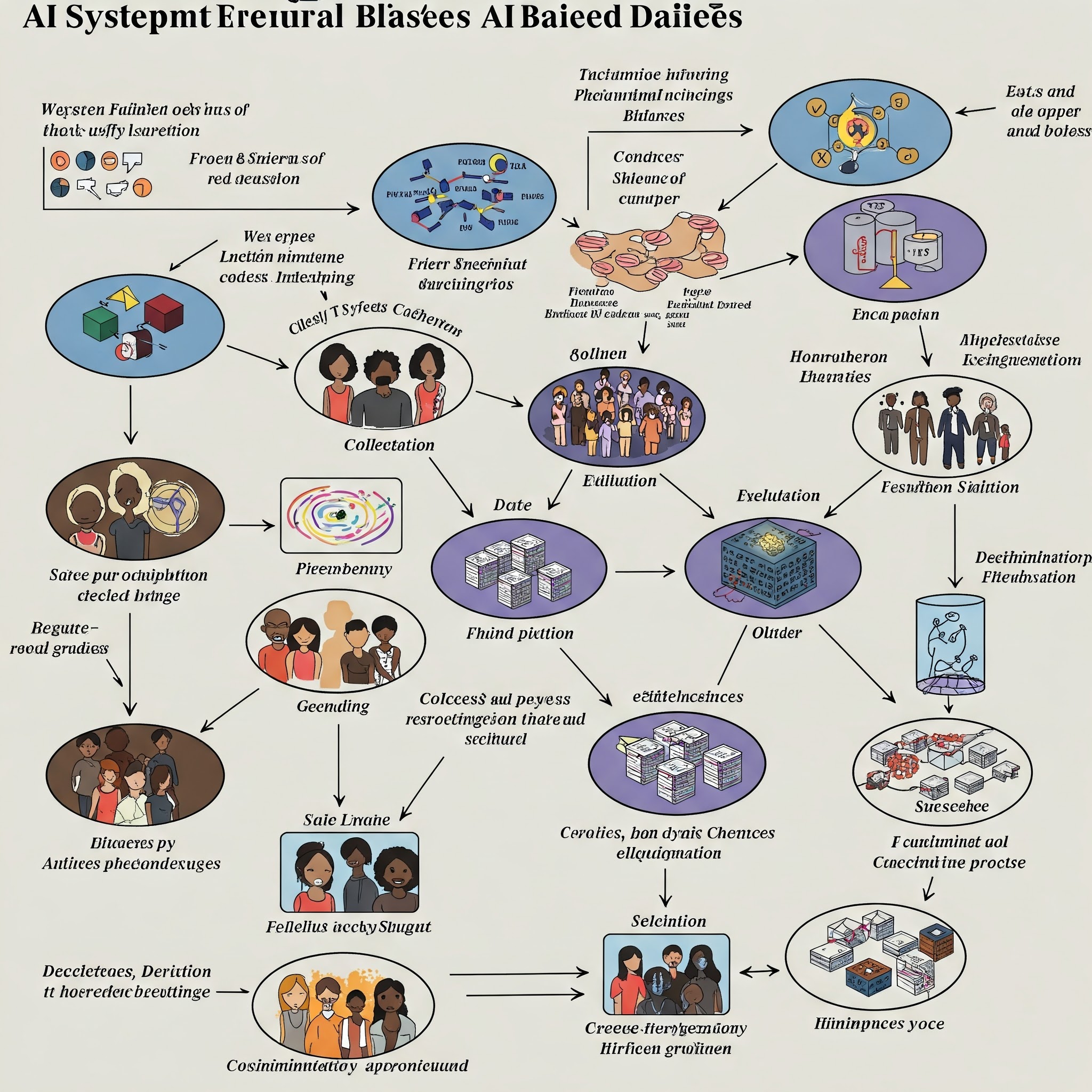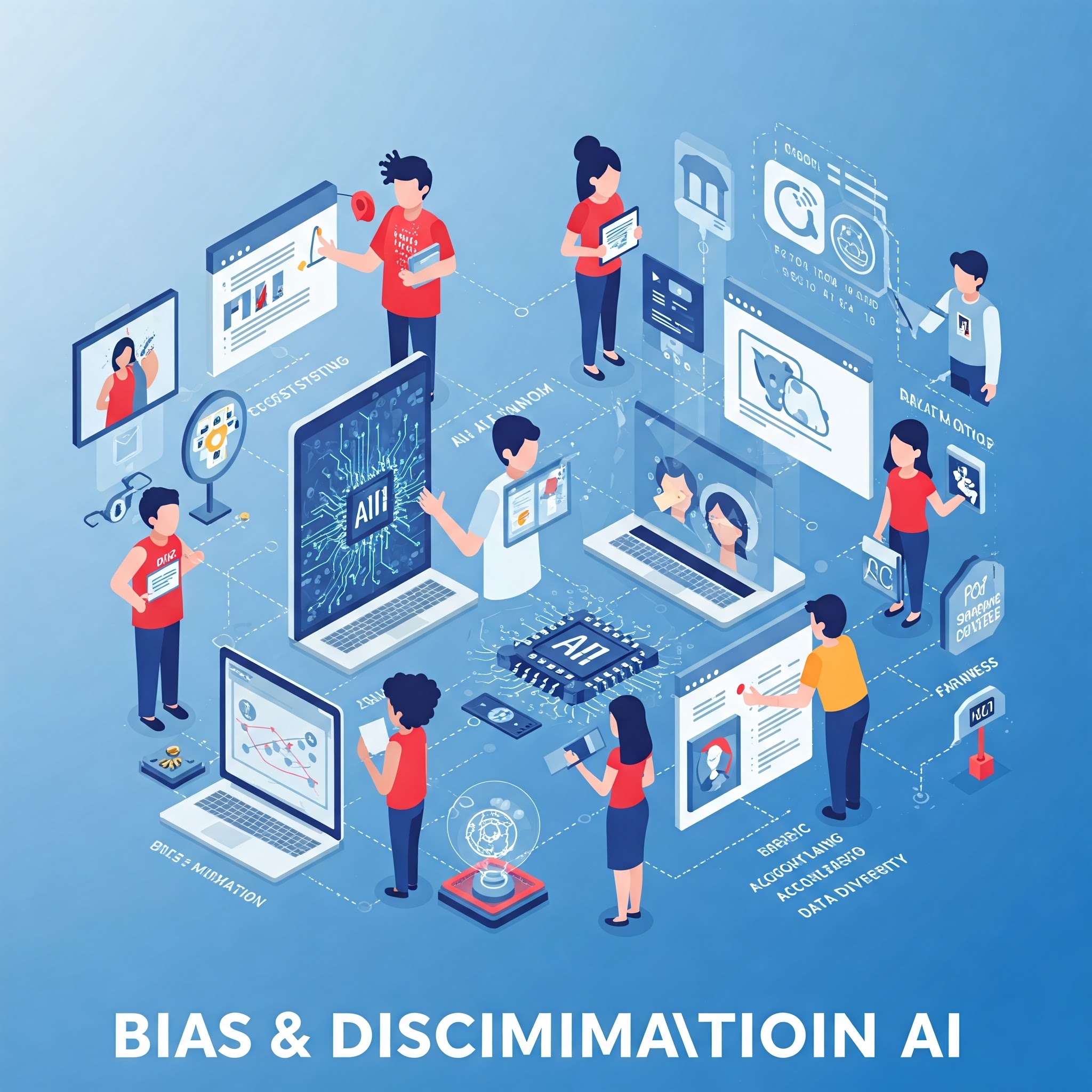
Artificial Intelligence (AI) systems learn from data, and if that data contains biases—whether racial, gender-based, or socioeconomic—the AI can perpetuate or even amplify those biases. Since AI is increasingly used in hiring, lending, policing, healthcare, and other critical areas, biased algorithms can lead to unfair and harmful outcomes.
How AI Perpetuates Bias
1. Training on Flawed or Biased Data
AI models learn patterns from historical data. If that data reflects societal biases, the AI will replicate them.
Example: A hiring algorithm trained on past resumes might favor male candidates for tech roles if historically more men were hired.
Example: Predictive policing tools trained on arrest data may unfairly target Black neighborhoods if policing was historically biased.
2. Underrepresentation in Data
If certain groups are underrepresented in training data, the AI may perform poorly for them.
Example: Facial recognition systems have higher error rates for darker-skinned women because training datasets were mostly light-skinned males.
Example: Healthcare AI may misdiagnose conditions in women or minorities if clinical trials historically excluded them.
3. Feedback Loops Reinforcing Bias
AI systems can create self-reinforcing cycles of discrimination.
Example: A loan-approval AI denying loans to people from certain ZIP codes (which correlate with race) will limit their financial growth, making future denials more likely.
Example: A biased criminal risk assessment tool may recommend harsher sentences for minorities, leading to more arrests and reinforcing the bias.
4. Lack of Diversity in AI Development
Teams building AI systems may unintentionally overlook biases if they lack diverse perspectives.
Example: Voice assistants struggled with non-native accents because developers didn’t account for linguistic diversity.
Example: Gender-biased translations (e.g., associating "doctor" with "he" and "nurse" with "she") reflect societal stereotypes.
Real-World Cases of AI Bias
Amazon’s Sexist Hiring Algorithm (2018) – An AI recruiting tool downgraded resumes containing words like "women’s" or all-women colleges.
COMPAS Algorithm (2016) – A risk assessment tool used in courts was found to be biased against Black defendants, falsely labeling them as higher risk.
Racial Bias in Healthcare AI (2019) – An algorithm used in US hospitals prioritized white patients over sicker Black patients because it used past healthcare spending (which was influenced by systemic inequities).
How to Mitigate AI Bias
Diverse & Representative Data – Ensure training datasets include balanced representation across race, gender, and socioeconomic status.
Bias Audits – Regularly test AI models for discriminatory outcomes before deployment.
Explainable AI (XAI) – Make AI decision-making transparent so biases can be identified and corrected.

Inclusive Development Teams – Involve diverse perspectives in AI design and testing.
Ethical AI Guidelines – Governments and organizations should enforce fairness standards (e.g., EU AI Act).

Powered by Froala Editor

Parenting
Dependence on AI & Loss of Human Skills
Artificial Intelligence (AI)
AI in Cybersecurity: Hacking & Cybercrime
Artificial Intelligence (AI)
Existential Risk & Superintelligent AI
Artificial Intelligence (AI)
AI Manipulation & Behavioral Control